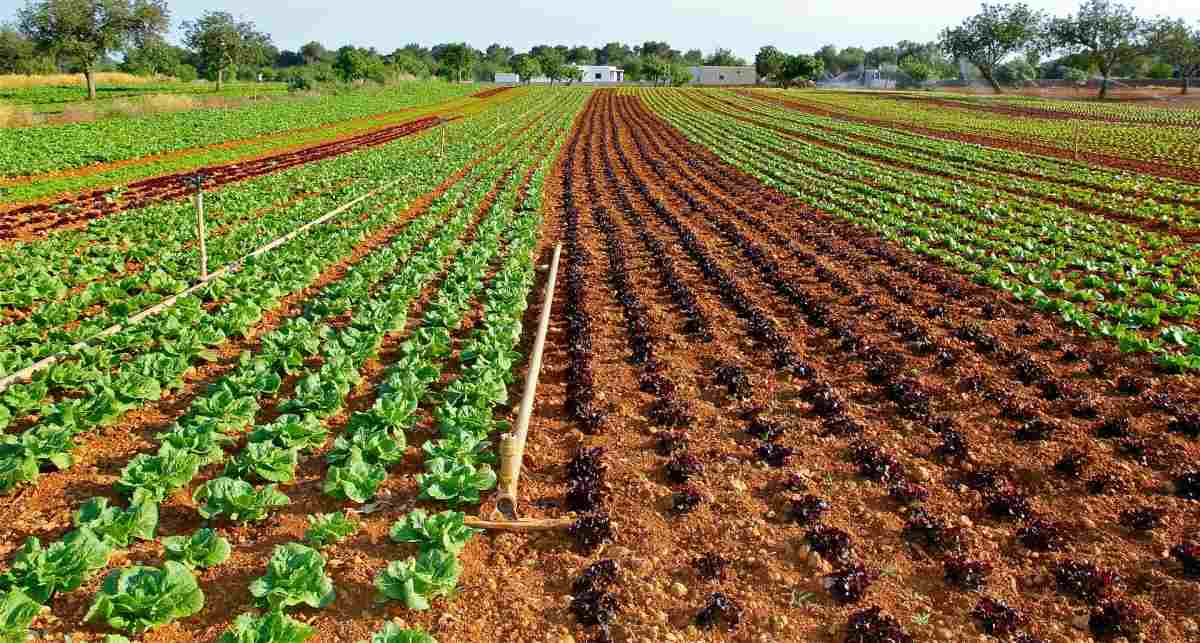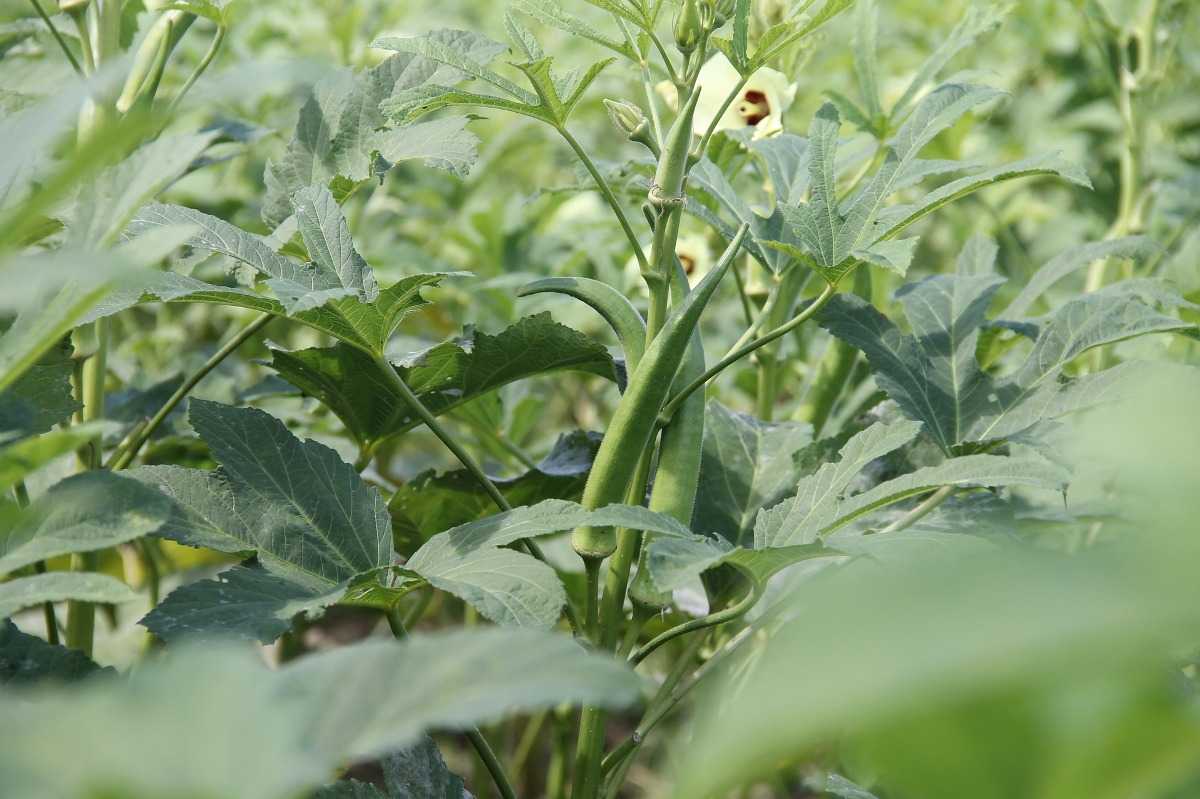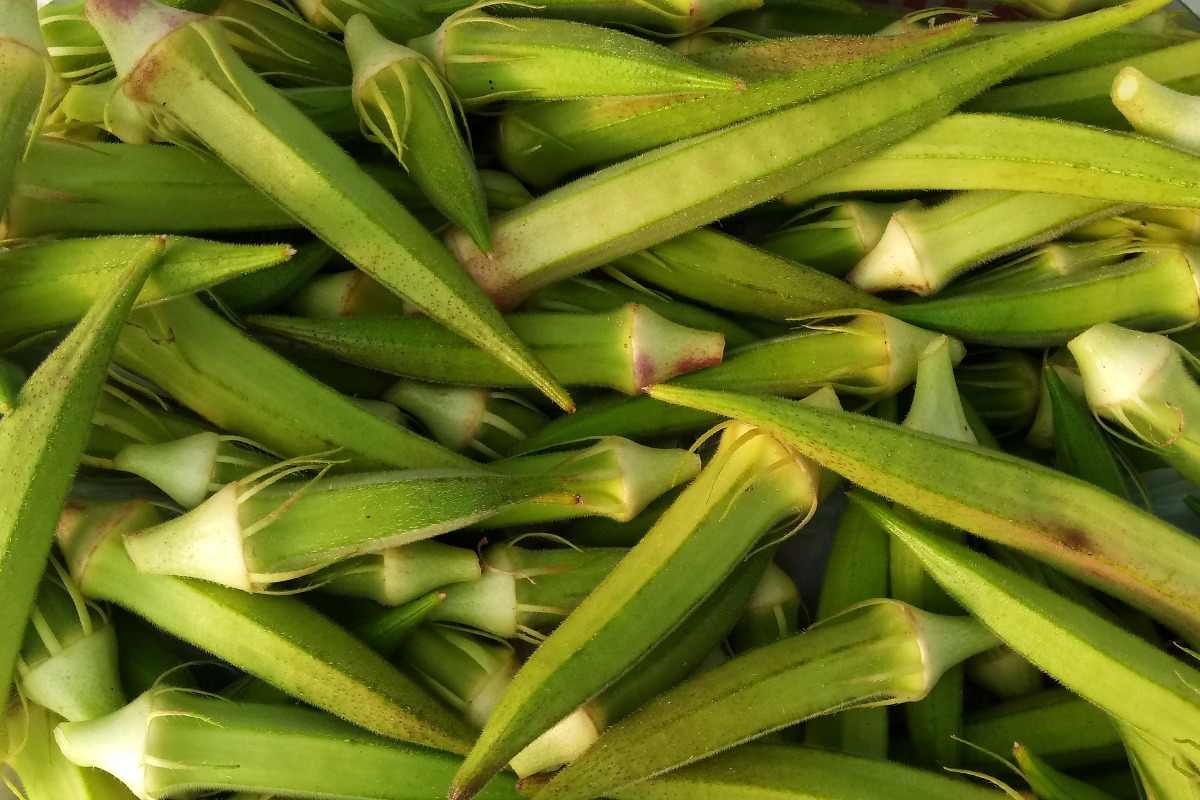Vegetable farming profit per acre
Vegetables play a major role in supplying essential minerals, vitamins, and fiber. Vegetables are consumed as a side dish with starchy staple food to add flavor to a meal. Vegetables are an excellent source of vitamins and have vitamins A and C. They supply minerals such as calcium and iron besides proteins and carbohydrates. If you want to get started growing vegetables for profit, it can be a rewarding experience, especially if you grow them organically and today there is a huge demand for organically grown vegetables and as the most expensive vegetable crops on the market. Those are the most profitable vegetable crops you can retail for a premium.
A step by step guide to vegetable Farming Profit Per Acre in India
There are plenty of natural methods to reduce the effort of weeding, such as mulching, (using a thick layer of organic substances such as seaweed or grass clippings to not only keep the weeds down but also to feed the growing plants). Depending on the amount of land you have available, you can be able to devote space per acre or per square foot, and even if you’re short on land, you could devote various indoor areas for different plant types, giving a diversified income stream from any space you can use, inside or out.
Basic requirements for profitable vegetable farming
Selection of vegetable seeds – It is imperative to have better quality vegetable seed possessing genetic characters suited to the environment in which it is grown. Good vegetable seed should be a true-to-name, viable, disease- and pest-free, free from weeds, dirt, and other foreign materials.
Selection of cultivars – Cultivars suitable for open field conditions is suitable for Polyhouse cultivation. But relatively rapid-maturing cultivars and high-yielding crop hybrids are ideal. The selection of vegetable cultivars and hybrids depends on plant type and their growth behavior. Tomato cultivars and hybrids must be indeterminate types. The vegetable plants are grown upright as a single stem rather than a bush. The cucumber cultivars must be unique. They must have an only female flowering habit, with dark green parthenocarpic (seedless) fruits free of bitterness.
Plant spacing – For efficient vegetable farming, appropriate plant spacing is required. Plant spacing involves two distinct factors, such as;
Plant arrangement – the spatial distribution of the vegetable plants (essentially the distance between the rows);
Plant density – the number of plants/m2
Growing the right type of vegetable plant for profit
Growing vegetables and have already realized that if growing for a profit or a business, certain plants and even some specialty crops are not cost-effective if you have a relatively small area of land where you’d only be able to plant a couple of plants per square foot. If you can harvest more per acre, you could have more plants to cater to premium vegetable varieties while maintaining enough land per acre to cultivate the most affordable in-demand produce with a lower profit margin.
With limited space, you need to value every inch you have and try to grow products that will produce a good return both in terms of quantity and also demand. Growing a specialty crop is a better way to go when you can commit to plants grown indoors or limited outdoor space.
Vegetable seed production
Seed production in vegetables is the limiting factor for the cultivation of vegetable plants in India. The vegetables need a specific temperature and other climatic conditions for flowering and fruit set. Some vegetable plants are grown in one part of the country but their seed production is restricted to another part. To reduce such microclimatic condition a protected environment is also essential.
Vegetable cultivation in the low-cost and medium-cost greenhouse is a technical reality in India. Such vegetable production system has not only extended the growing season of vegetables and their availability but encouraged conservation of rare vegetables. The seed production of vegetables under protected environment is also the main step to increase vegetable production in India.
Basic requirements for profitable vegetable business
Like any business, a vegetable farming business also demands proper planning, investment, adequate knowledge, and marketing. Though, here we have discussed some of the essentials.
- First of all, solid business planning is the most.
- In starting, figure out how should land area you have.
- According to the agro-climatic condition choose the vegetable for farming.
- You must consider the local market and because vegetables are hugely perishable items.
- Also, cultivate the scope of export.
- Select the right species.
- Furthermore, you must arrange the proper irrigation for your farm.
- Plan for harvesting storage.
- Calculate the entire working capital cost.
- Finally, you must arrange the required finance.
Ways to improve the vegetable business profit
There are numerous ways to improve the vegetable business profit but without any specific condition of the field, weather, market, and other factors not being mentioned, it is going to be difficult to be specific about it.
In general,
Crop – Selecting a proper vegetable crop that has the highest potential to grow and yield better based on your climatic conditions is important to get good profit.
Structure – If the weather permits growing vegetables under a Polyhouse would result in higher yield with a controlled environment.
Market – Based on the market demand or availability of export facility the vegetables can be exported or sold to buyers who export.
Organic – Growing vegetables organically would increase the profit but at the same time, the yield won’t be the same as the traditional way. It has a specific niche market and it can be exploited to see the outcome based on who and whom you target.
Technology – Precision technology is best to give the plants what it needs at the right time and right amount with minimal waste and its energy-efficient too. This would indirectly help in reducing the input cost and saving you money and giving a good business profit.
Direct selling – Cutting the involvement of middleman would greatly increase your business profit. There are lots of online apps like Farmerfriend which connects farmers to buyers directly. You could also visit hotels or supermarkets who would buy products directly and this gives farmers an advantage to ask for the right price.
List of vegetable crops for maximizing your profits
The best crops for maximizing vegetable growing profits are as follows;
Growing vegetables for profit can be a very rewarding experience, particularly if you grow plants organically. Choosing the vegetable plants to grow for-profit mainly depends on a balance between what vegetables are the most expensive to buy in the shops, yet at the same time are the vegetables most in demand. Vegetable farming is a profitable business and this not only for a big farmer. It is also profitable for small and marginal farmers. A small-scale vegetable farm business has the earning potential throughout the year.
In case if you miss this: Organic Cauliflower Cultivation.

Some of the profitable vegetable crops are Amaranth, Ash Gourd, Asparagus, Baby Corn, Beetroot, Bitter Gourd, Bottle Gourd, Brinjal, Broccoli, Button Mushroom, Cabbage, Capsicum, Carrot, Cauliflower, Cucumber, Green Beans, Green Peas, Ladies Finger Or Okra, Lettuce, Onion, Potato, Pumpkins, Radish, Ridge Gourd, Spinach, Snake Gourd, Spine Gourd, Sweet Potato, Tomato, and Oyster Mushroom.
Vegetable marketing
Generally, the marketing of the vegetable product is the biggest challenge and there are many popular brands in the market, which act as an entry barrier for new food products. Indian market is flooded by imported products. So, newcomers need to give maximum importance to the marketing of their products. It is always better to engage a professional agency for product branding and also marketing. The units shall allocate a reasonable budget for advertisement and promotion
Quality control and quality assurance
The processed products must follow the Food Safety and Standard Authority of India (FSSAI) act 2006. FSSAI Act is applicable to pan India for all food products including vegetables. It prescribes minimum standards of operating procedures, food safety norms, packaging, and labeling norms. The new units need to take a license known as FSSAI number from the Food Safety and Standards Authority of India.
Pest and disease control in vegetable farming
The range of pests and diseases that can damage vegetable plants is immense, but specific ones that have a major influence on productivity in any particular region are usually limited. Pests and diseases can be soil-borne or airborne and can be crop-specific or generic, so the range of potential control measures is huge. Nevertheless, several basic principles can be applied to reduce their impact on crop yield and quality.
For vegetable farming profit per acre
In this vegetable cost and profit analysis, for example, we can take Okra profit per acre;
Requirements for profitable Okra cultivation;
Okra is also called ‘Lady’s Finger’. It is one of the most popular vegetables grown throughout the tropics and warm parts of the temperate zone. Okra is a warm-season crop and thrives best during warm humid seasons, although it grows fairly well in the hot summers.
Okra crop is a tall-growing, warm-season, and annual vegetable crop. It is a popular and also profitable vegetable in the country. Farmers can grow okra in any type of soil. The advanced varieties of Okra – Hisar unnat, VRO-6, Pusa A-4, Parbhani Kranti, Punjab- 7, Arka Anamika, Varsha uphar, Arka Abhay, Hisar Naveen, and HBH.
Land Preparation – For Okra cultivation, the field should be plowed 2 to 3 times and the soil must be brittle and then plowed. Also, sowing should be done in a row. It is important to do first weeding after 15-20 days of sowing. Prepare the field thoroughly to obtain good crop stand and optimum crop yield. Plow the field 2 to 3 times at a week interval to prevent the growth of weeds. Plow at a depth of 15 to 20 cm for better root penetration. Harrow every after plowing to pulverize and level the field. A well-pulverized soil promotes good soil aeration and then enhances root formation. Prepare furrows after the last harrowing at a distance of about 100 cm between rows.
Okra can be grown in a wide range of soils sandy loams to clay loams, provided they are well-drained and supplied with enough organic matter. Main Okra growing season is Kharif season (rainy season) June-July. Though, it can be grown in September and October and January- February (summer season) where assured irrigation facilities are available. It requires 8 to 10 kg/hectare of seeds during Kharif and September-October and 18 to 22 kg/ha for the summer season planting. During Kharif season where growth is vigorous, okra seeds are sown at 60 X 30 cm distance, while in summer the vegetative growth is relatively less and seeds are planted at 45 to 30 cm distance. The seed is sown by the dibbling process.
Apply 25 tonnes of farmyard manure per hectare and thoroughly mix at the time of field preparation. Recommended fertilizer doses can be 100 kg N, 50 kg each of P2O5, and K2O per hectare. A full dose of P and K and half dose of N are applied at the time of sowing. The remaining half dose after 1 month of sowing. Fields are kept free from weeds, either by hoeing or hand weeding. In summer regular irrigation is given at an interval of 4 to 8 days depending upon the type of soil; crop growth and climatic conditions. During the rainy season, usually, no irrigation is given except where there is a long dry spell.
Okra is planted directly in the field. It requires five kg of okra seeds to plant a hectare. To attain uniform germination, soak the seeds with water overnight before planting. Plant okra seeds in slightly moist soil at a rate of 2 to 3 seeds per hill at a distance of 30 cm and 2-5 cm deep. Replant missing hills 3 days after emergence. Water is a limiting factor in crop production. Irrigate the plants regularly. Use furrow irrigation if available every 7 to 14 days depending on the season and soil type. Remove stunted and sickly seedlings leaving the healthy ones.
Okra is resistant to insect pests and diseases. Though, it is necessary to observe the field to make sure that the plants are free from pests. The important pests of okra are cotton stainers and stink bug. The most serious fungal diseases are cercospora blight, powdery mildew, fruit rot, and root-knot nematode. Prevent the occurrence of pests by practicing field sanitation, plant resistant varieties, and crop rotation. Generally, the okra crop will be ready for picking in 50-60 days after sowing. The first okra pods can be kept for seeds. If the pods are not picked in time, its quality goes decreasing. The pods should be picked every 2 to 3 days. Normally, the okra pod will be ready for picking after 5 to 7 days of flowering.
The cost and income analysis for one-acre okra farming or model project report of ladies finger
You may also check this: Fish Farming Profit Per Acre in India.

For example, the cost of cultivation of Okra per acre;
If you are ready to earn the money through Okra farming, below are the cost details; the costs are in Indian Rupees.
Labour inputs
- Land preparation cost (plowing, harrowing, furrowing) – 2660/-
- Planting – 900/-
- Fertilization – 300/-
- Thinning – 600/-
- Care of the plants
- Irrigation (2x a week for 1 month -1,100/-
- Weeding and cultivation -1,000/-
- A side dressing of fertilizer -300/-
- Hilling up -600/-
- Control of pest and diseases -550/-
- Harvesting (8 primings) -3,000/-
- Packing -1,150
Total amount = Rs.12,160/-
Material Inputs
- Seeds (2.8kg) (Rs350/kg) -980/-
- Fertilizer -3,100/-
- Insecticides (4Liters) (Rs 850/Liter) -1,400/-
- Polyethylene (100 Pieces) (Rs 60 each) -2,400/-
- Fuel (40 Liters) (80/liter) -1,300/-
- Miscellaneous -600/-
Total amount = 9,780/-
Total cost per 1 acre vegetable farmoing (12,160+9,780) =21,940/-
Okra yield per acre – (4,000kg)
The gross income (15.00/Kg) = 4,000 x15 = Rs.60,000/-
Net Income or vegetable farming profit per acre =Rs.60000 – Rs.21,940 = Rs. 38,060/-
The conclusion of profit per acre in vegetable farming

The above-mentioned numbers keep changing every year based labour charges, material cost, and market price and other factors such as soil fertility and method of farming, type/variety of vegetable, the season of growth and environmental conditions may influence the cost and profit in vegetable farming per acre. With a proper vegetable farming business plan, once can get good profits.
In case if you are interested in How to Make Money from Vegetable Farming.
I am looking for Jeera, Pepper, Fenugreek, and few fruits to buys tones, need the guideline in which place it is growing to get in cheap
We produce jeera on good scale.